Art
Art is a diverse range of human activities and products that involve creating visual, auditory, or performance artifacts. It is a way for individuals to express their emotions, ideas, and creativity through various mediums such as painting, drawing, sculpture, music, dance, and literature. Studying art can help individuals develop their creativity, critical thinking skills, and cultural awareness.
Key Concepts in Art
- Elements of Art: These include line, shape, form, color, value, texture, and space. Understanding these elements helps in creating and analyzing artworks.
- Principles of Design: These principles, such as balance, contrast, emphasis, movement, pattern, rhythm, and unity, guide artists in creating harmonious and visually appealing compositions.
- Art Movements: Different periods in art history, such as Renaissance, Baroque, Impressionism, Cubism, and Surrealism, each with its own distinct characteristics and styles.
- Art Media: Various tools and materials used in creating art, including pencils, paints, clay, digital software, and musical instruments.
- Art Appreciation: Understanding and evaluating artworks, including their cultural, historical, and aesthetic significance.
Study Guide for Art
When studying art, it's essential to explore a variety of topics and engage in hands-on activities to gain a deeper understanding of the subject. Here are some key areas to focus on:
Art History
- Explore different art movements and their characteristics.
- Study the works of famous artists from various time periods and cultures.
- Examine how historical events and societal changes influenced art movements.
- Visit art museums or galleries to observe and analyze artworks in person.
Elements and Principles of Art
- Learn about the elements of art and how they are used in different art forms.
- Understand the principles of design and their application in creating artworks.
- Experiment with different art materials and techniques to apply the elements and principles in your own creations.
Art Appreciation
- Develop a critical eye for art by analyzing and interpreting artworks.
- Discuss the cultural and historical context of specific artworks or art movements.
- Participate in group discussions or debates about the value and impact of different art forms.
Creative Expression
- Engage in artistic activities such as drawing, painting, sculpting, or playing a musical instrument.
- Experiment with different mediums and techniques to express your ideas and emotions through art.
- Reflect on your own creative process and seek inspiration from diverse sources.
By immersing yourself in these areas of study, you can develop a well-rounded understanding of art and its significance in human culture and expression.
.◂Science Worksheets and Study Guides Sixth Grade. Genetics - Study of Heredity
Study Guide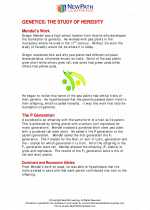 Genetics - Study of Heredity
Genetics - Study of Heredity  Activity Lesson
Activity Lesson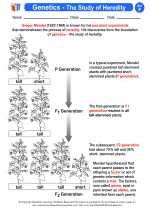 Genetics - The Study of Heredity
Genetics - The Study of Heredity  Worksheet/Answer key
Worksheet/Answer key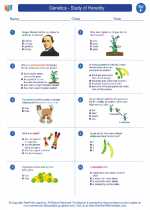 Genetics - Study of Heredity
Genetics - Study of Heredity  Worksheet/Answer key
Worksheet/Answer key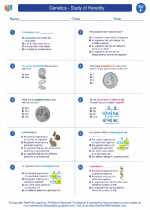 Genetics - Study of Heredity
Genetics - Study of Heredity  Worksheet/Answer key
Worksheet/Answer key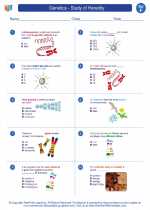 Genetics - Study of Heredity
Genetics - Study of Heredity  Vocabulary/Answer key
Vocabulary/Answer key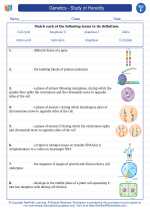 Genetics - Study of Heredity
Genetics - Study of Heredity  Vocabulary/Answer key
Vocabulary/Answer key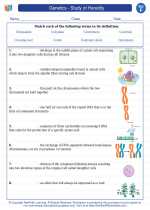 Genetics - Study of Heredity
Genetics - Study of Heredity  Vocabulary/Answer key
Vocabulary/Answer key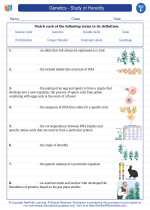 Genetics - Study of Heredity
Genetics - Study of Heredity  Vocabulary/Answer key
Vocabulary/Answer key Genetics - Study of Heredity
Genetics - Study of Heredity  Vocabulary/Answer key
Vocabulary/Answer key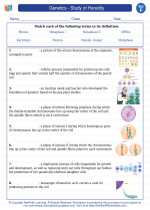 Genetics - Study of Heredity
Genetics - Study of Heredity  Vocabulary/Answer key
Vocabulary/Answer key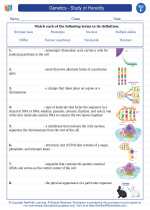 Genetics - Study of Heredity
Genetics - Study of Heredity  Vocabulary/Answer key
Vocabulary/Answer key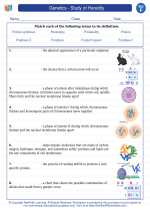 Genetics - Study of Heredity
Genetics - Study of Heredity  Vocabulary/Answer key
Vocabulary/Answer key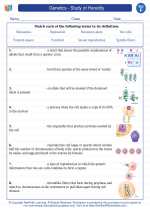 Genetics - Study of Heredity
Genetics - Study of Heredity  Vocabulary/Answer key
Vocabulary/Answer key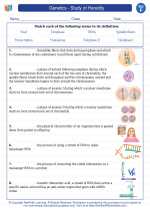 Genetics - Study of Heredity
Genetics - Study of Heredity 

 Activity Lesson
Activity Lesson
 Worksheet/Answer key
Worksheet/Answer key
 Worksheet/Answer key
Worksheet/Answer key
 Worksheet/Answer key
Worksheet/Answer key
 Vocabulary/Answer key
Vocabulary/Answer key
 Vocabulary/Answer key
Vocabulary/Answer key
 Vocabulary/Answer key
Vocabulary/Answer key
 Vocabulary/Answer key
Vocabulary/Answer key
 Vocabulary/Answer key
Vocabulary/Answer key
 Vocabulary/Answer key
Vocabulary/Answer key
 Vocabulary/Answer key
Vocabulary/Answer key
 Vocabulary/Answer key
Vocabulary/Answer key
 Vocabulary/Answer key
Vocabulary/Answer key

The resources above cover the following skills:
LIFE SCIENCE
From Molecules to Organisms: Structures and Processes
Students who demonstrate understanding can:
Construct a scientific explanation based on evidence for how environmental and genetic factors influence the growth of organisms.
Heredity: Inheritance and Variation of Traits